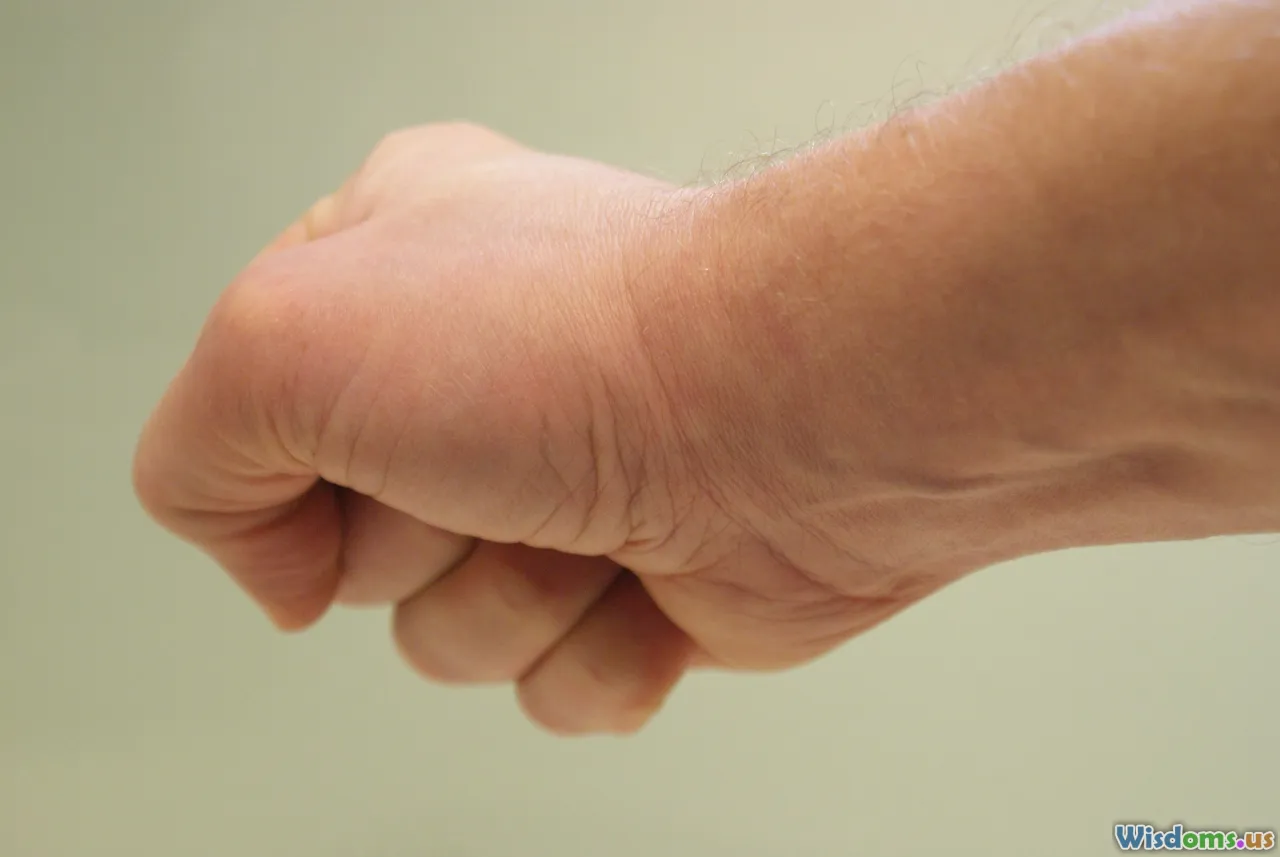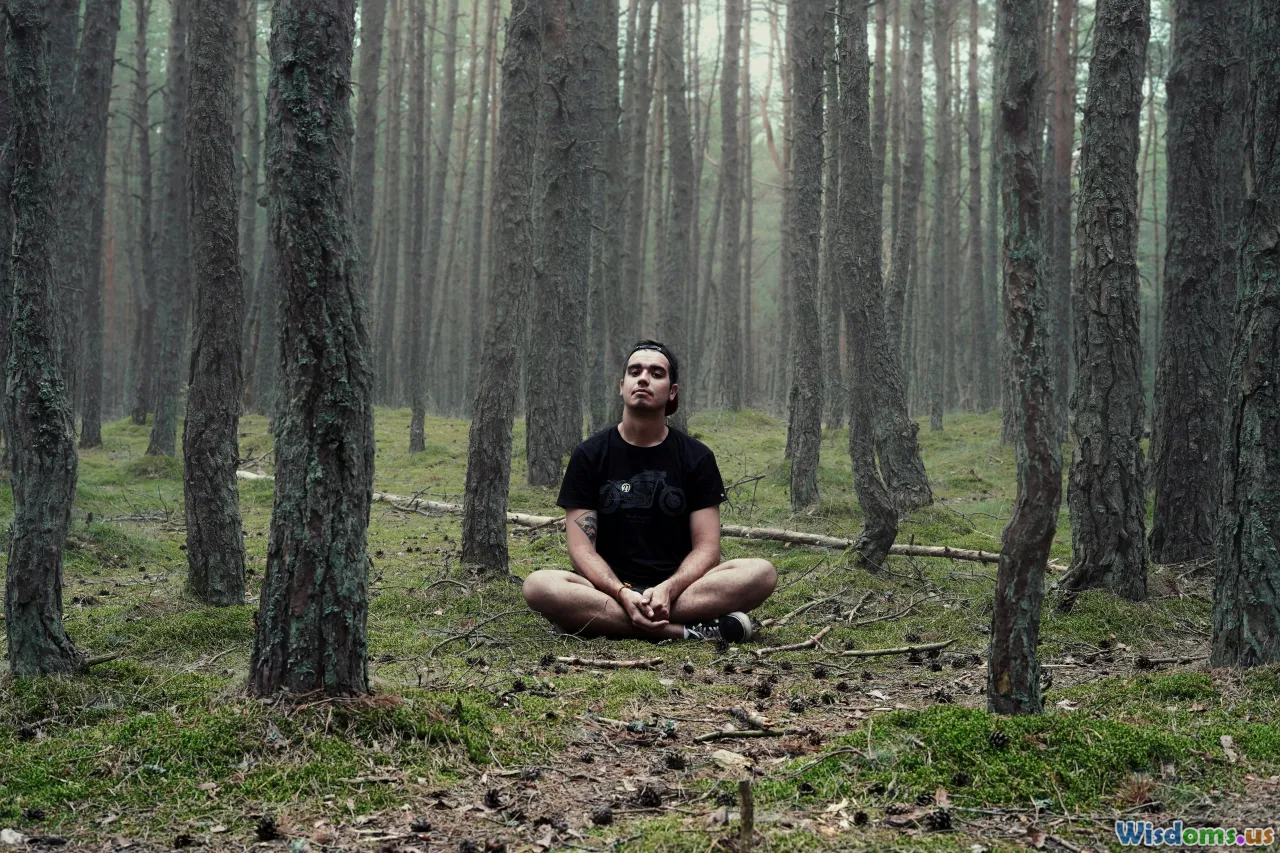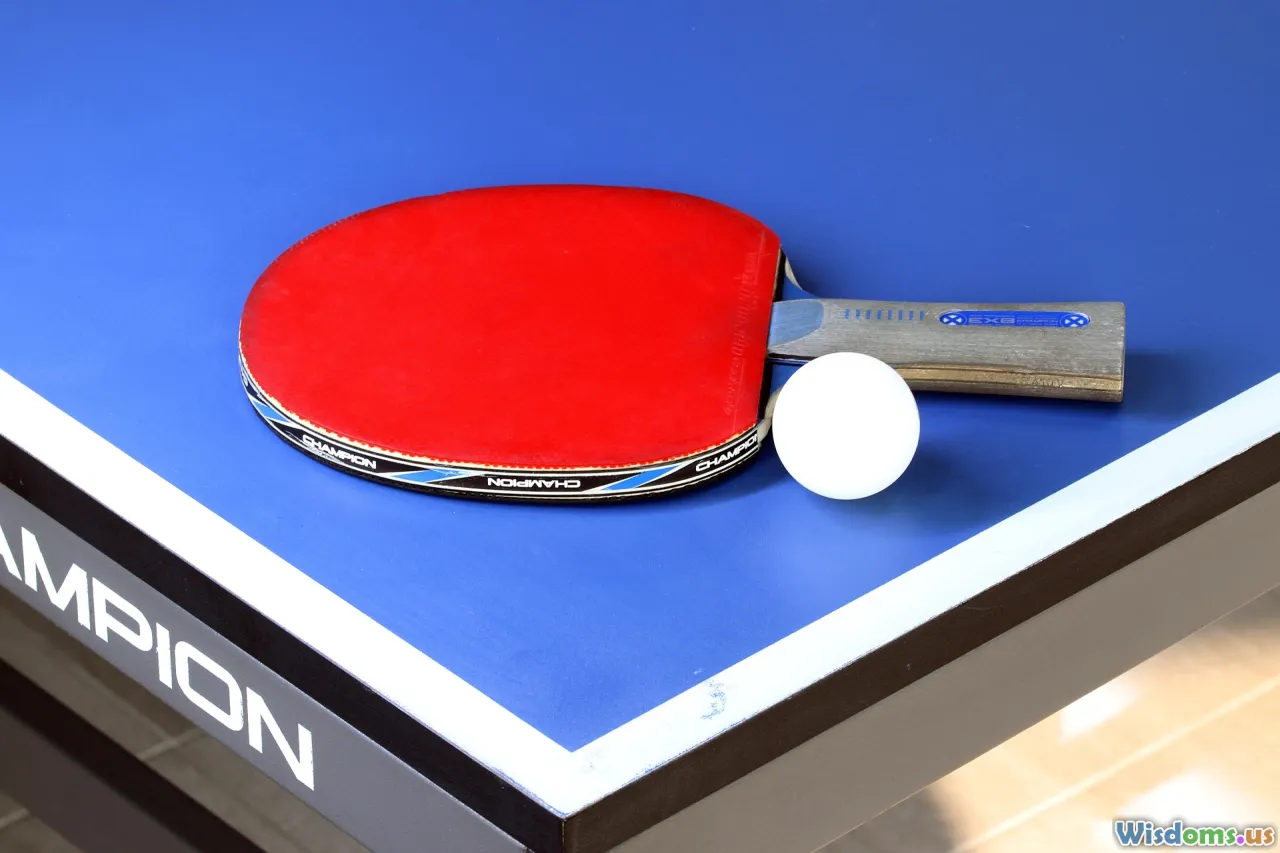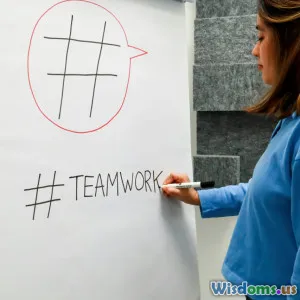
Surprising Relaxation Techniques Used by CEOs Under Pressure
18 min read Explore unique relaxation methods top CEOs use to manage high stress and pressure. (0 Reviews)
Surprising Relaxation Techniques Used by CEOs Under Pressure
It's easy to imagine CEOs as relentless powerhouses, fueled by caffeine, adrenaline, and constant hustle. Yet, behind every multi-billion-dollar decision and sleepless night, even top executives feel the squeeze of stress. The surprising truth? Many CEOs are just as obsessed with their relaxation routines as their bottom lines. In fact, some of their strategies might seem quirky, obscure, or even a little unconventional at first glance. But they're rooted in effectiveness—sometimes proven by science, sometimes by experience. Let’s explore the relaxation techniques—often unexpected—that help these leaders keep their cool amid chaos, with actionable ideas you might want to borrow.
Silent Retreats: Escaping the Noise to Find Focus

In a world buzzing with notifications and overflowing inboxes, it's tough for anyone—especially CEOs—to switch off. That’s precisely why silent retreats have gained traction as a secret weapon among the leadership elite.
A silent retreat typically means spending several days (sometimes a full week or more) in a monastery, meditation center, or secluded lodge, practicing silence to reset the mind and body. Ray Dalio, the billionaire founder of Bridgewater Associates, swears by meditative silence, crediting such practices with enhancing his clarity and decision-making prowess.
How it works:
- Complete Digital Detox: Phones and laptops stay behind. There’s no Slack ping, urgent text, or late-night corporate call.
- Deep Reflection: Structured guided meditation, breath work, and slow walks replace business talk.
- Structured Routine: Meals, sleep, and daily walks become sacred rituals—freeing the mind.
Actionable Insight: You don’t need a monastery to start. Dedicate a full day to silence, turn off all devices, and engage in mindful hobbies. Even such mini-escapes can clear your mental clutter and boost your focus, as research in the journal Psychosomatic Medicine indicates more mindful practices reduce emotional reactivity and promote calm.
Forest Bathing: Nature’s Antidote to Boardroom Burnout

Forest bathing—originally known as shinrin-yoku in Japan—may sound like a trend for nature lovers, but it’s surprisingly powerful and rapidly growing among CEOs. Tim Cook, Apple’s CEO, is a vocal proponent of hiking in the outdoors to clear his mind, often walking in the hills around Apple’s Cupertino headquarters.
How CEOs make it work:
- Schedule Walks Into The Calendar: Leaders like Cook block out time on their official calendars for walking meetings, even bringing key team members to offsites in lush natural parks.
- Mindful Immersion: This isn’t just walking; it involves fully engaging all senses—listening to leaves rustle, smelling the earth, observing sunlight streaming through branches. The Japanese government has long endorsed forest bathing for public health, with studies showing it lowers cortisol levels and heart rate.
Actionable Tip: Access to a redwood forest isn’t required. A stroll in any urban park or green space works. Try making your next one-on-one a walking meeting outside—the change of scenery might just boost creative problem-solving, as Stanford research suggests.
Controlled Breathwork: Harnessing Oxygen for Resilience

Deep breathing is a cliché—until done with intention. CEOs under pressure often turn to advanced breathwork techniques to calm both body and mind, inspired more by Navy SEALs than yoga studios.
Marc Benioff, Salesforce’s charismatic CEO, touts breath meditation and has hired personal breathing coaches to guide him through high-pressure seasons. This practice has ancient roots but is increasingly validated by science: Controlled breathing activates the parasympathetic nervous system, lowering heart rate and promoting calm.
How to Try It (Box Breathing Technique):
- Inhale quietly through the nose for a count of 4.
- Hold the breath for a count of 4.
- Exhale through the mouth for a count of 4.
- Hold the exhale for a count of 4. Repeat several times.
Insider Note: Many CEOs integrate breathwork between meetings, after tough conversations, or before public speaking gigs. Not only does this lower stress, but studies have linked it to better emotional regulation and memory recall, both invaluable for top-level decisions.
Art Appreciation: Creativity as a Stress Valve

It might appear counterintuitive—busy leaders prioritizing art-gallery walks or painting—yet it’s a trend with serious adherents. Indra Nooyi, former PepsiCo CEO, famously carved out time for music, citing the stress relief she found in creative hobbies. Similarly, Jeff Bezos attributes some of his most innovative ideas to regimented time spent reflecting in spaces dedicated to visual art.
Why art helps CEOs:
- Stimulates the Right Brain: Creative activities engage different cognitive pathways versus spreadsheets and strategy decks, providing mental balance.
- Neuroscience-Backed: Regular exposure to visual art has been shown in a University College London study to trigger dopamine release—the brain’s natural reward chemical.
Actionable Next Step: Whether it’s scheduling an hour a week at a local gallery, keeping a doodle pad at your desk, or picking up a beginner art kit, giving yourself permission to immerse in creativity is more than indulgent—it’s strategic.
Laughter Sessions: The Underestimated Power of Joy

CEOs are more likely to be seen frowning over earnings than doubled over in giggles. Yet laughter is a potent, scientifically validated stress-buster. Satya Nadella of Microsoft has extolled the virtues of “bringing joy” to tense boardrooms, likening genuine shared laughter to social superglue.
A swath of leaders, including Arianna Huffington, structure in brief group laughter sessions or ice-breaking jokes before tense negotiations.
Why it works:
- Laughter not only releases endorphins—our body’s happy hormones—but, according to Mayo Clinic, it activates and relieves stress responses, then soothes tension.
- Group laughter increases trust and empathy, vital for cohesive teams and workplace morale.
Try This: Schedule a brief ‘fun break’ for your next team meeting. No stand-up comic skills needed—a collection of amusing (yet work-appropriate) memes or videos can prime the session. The resulting glow of goodwill can spill into smoother collaboration and sharper focus.
Mindful Eating: The Meditative Office Lunch

The business lunch is often a battlefield of multitasking, networking, and negotiation. But some CEOs rigorously practice mindful eating, turning meals into sacred pauses—no phones, no emails, only sensory attention on taste, aroma, and texture.
Padmasree Warrior, former CEO of NIO U.S., revealed she spends lunchtime away from devices, focusing entirely on her meal. This isn’t just about savoring food, but about retraining the brain to slow down and check in.
How mindful eating boosts resilience:
- According to Harvard Health, mindful eating helps regulate stress and keeps blood sugar levels balanced, reducing crashes later in the workday.
- Increases self-awareness—CEOs report feeling more grounded, making emotionally charged decisions less likely after lunch.
Tips for implementation:
- Set aside dedicated meal times and places free from work distractions.
- Take smaller bites, chew thoroughly, and pause between forkfuls.
- Reflect on food’s origin or texture to draw focus to the present moment.
Micro-Meditations in the Elevator: Fast Calm on the Go

Long guided meditations are great, but who has time for an hour in lotus pose between sales calls? That’s where micro-meditations shine. This emerging practice takes less than two minutes and can be performed anywhere—in elevators, waiting rooms, or at your desk.
Sara Blakely, founder of Spanx and one of Forbes’ self-made billionaires, is known for her quick ‘mental resets‘ peppered between tasks. These ultra-short sessions are designed to interrupt stressful patterns and reset intention before the next responsibility.
Sample Method:
- Pause. Notice your breath.
- Scan for tension. Relax your jaw, shoulders, and hands.
- Pick an intention: What’s the next best move? Visualize success in the following task.
Evidence Backs It Up: A 2021 study in Frontiers in Psychology found that even 60-second meditations performed multiple times daily can significantly reduce perceived stress and improve executive functioning.
Sensory Deprivation and Float Tanks: Finding Solitude in Salt

Soundproof tanks filled with salty, skin-temperature water have made their way from wellness centers to the schedules of Silicon Valley’s finest. Floating in silence (and darkness) is a counterintuitive form of extreme disconnection, beloved by CEOs like Joe Rogan, who credits tank sessions with his ability to reset focus and creativity.
Why Float Tanks Are Trending:
- Total Sensory Withdrawal: No visuals, no noise, no touch—just mental stillness.
- Boosts Recovery: Scientific trials show that floatation can lower cortisol, reduce muscular tension, and spark creative thought, likely due to new neural pathways opening as the brain is freed from external cues.
Is It for You?
- Try a short 45-minute float session at a local spa.
- Alternatively, try simulated dim lighting and white noise apps to mimic part of the calming effect if a tank isn’t accessible.
Embracing Play: Gamification and Lighthearted Competition

Think grown adults juggling Nerf guns or ping-pong paddles might seem childish for the C-suite? Think again. From Tony Hsieh’s legendary Zappos offices (where playful antics were company policy) to Richard Branson’s impromptu “challenge games” on Necker Island, CEOs frequently cite play as vital for stress relief and team bonding.
Key benefits of play for leaders:
- Cognitive Rejuvenation: Play is proven to reset mental energy and foster creativity.
- Enhanced Social Bonds: Games build trust and break down hierarchical silos quickly.
Ideas to Steal:
- Schedule a weekly ‘play hour’ in the office with board games, quick trivia contests, or even playful product design sprints.
- Celebrate minor victories with impromptu challenges—fast, fun, and a proven mood booster.
High-Intensity Physical Microbursts: Quick Sweat, Maximum Reset

Not every CEO has a full hour for the gym, so what’s the hack? Microbursts—short, hard-hitting intervals of exercise—are incredibly popular. These quick sessions (think three minutes of burpees, a minute of stair runs) can be squeezed in between meetings and require zero equipment.
Jack Dorsey, former Twitter CEO, incorporated numerous micro-sessions during long meetings, sometimes inviting his executive team to join. It’s all about fast oxygenation and energy circulation.
Why it works:
- Major endorphin release in just minutes.
- Studies by the American College of Sports Medicine show microbursts spike alertness, mood, and physical relaxation immediately post-activity.
Action Plan:
- Set a phone timer every two hours for a 1-minute bout of jumping jacks, squats, or brisk walking around the office block.
Personalized Rituals: From Cooking to Crafting to Digital Sabbaths

While some CEOs find peace in high-adrenaline pursuits, others swear by more personal, meaningful rituals. Marissa Mayer, former Yahoo CEO, bakes birthday cakes for every team member. Bill Gates is fond of ‘Think Weeks’ where he reads, writes, and reviews ideas in total solitude.
Why rituals matter:
- Strong Emotional Anchors: Rituals—whether weaving, making tea, or designing a playlist—help leaders cultivate stability on tough days.
- Research agrees: According to Harvard Business School studies, engaging in meaningful personal rituals can increase subjective well-being and buffer against stress even when other interventions fail.
Action Steps:
- Choose a personal hobby you’ve sidelined and intentionally set ritual time for it each week.
- Encourage a company-wide ritual tradition—shared breakfasts, end-of-week gratitude circles, or show-and-tell, each fostering a micro-community.
Extreme pressure isn’t going away, and as these examples show, neither is the commitment of CEOs to finding unusual yet game-changing relaxation methods. Whether through floating in saline silence, laughing with their teams, hiking through forests, or baking pies, today’s leaders prove that relaxation is just as much a part of peak performance as board meetings and budgets. Their surprising routines—rooted in science, creativity, and a touch of play—have an actionable place in everyone’s stress management toolkit. Try one this week; your brain (and performance) might thank you.
Rate the Post
User Reviews
Popular Posts



















